John Mauceri ’67 B.A., ‘70 M.Phil.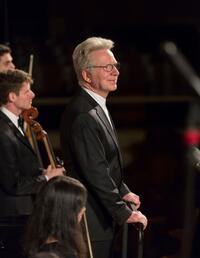
Music Director of the YSO from 1968-1974
When Beethoven was a lot younger, a mere 200 years old, the YSO celebrated his biggest birthday yet with an all-Beethoven program (December 17, 1970) that was an homage to the epic four-hour concert the master conducted in Vienna on December 22, 1808, when both his symphonies No. 6 and No. 5 were premiered. To this we added the Violin Concerto, played by Jonathan Bieler (who went on to play in the Philadelphia Orchestra) and Stravinsky’s “Happy Birthday” piece, composed for Pierre Monteux on the occasion of Monteux’s 80th birthday.
The 1970-71 season is worth remembering. It opened with Schoenberg’s Gurrelieder (a Parents’ Weekend challenge if ever there was one!) and ended with Mahler’s Symphony No. 2. Both were New Haven premieres. In between, we played the Berg Violin Concerto, la Mer, Petrouchka, Scriabin’s Prometheus with coordinated lasers (twice in one night for the overflow crowds), and The Miraculous Mandarin Suite. We also toured France, starting out in Paris’ Théâtre des Champs-Elysées, where we performed Debussy’s rarely performed last ballet score, Khamma, along with the Scriabin (no lights) and Ives’ Symphony No. 4. We brought a chorus along with us and had a couple of encores: the Danse Russe from Petrouchka and Gershwin’s I Got Rhythm Variations. (Overheard in Paris when we performed the Gershwin, a somewhat befuddled woman said, “Enfin, la Rhapsodie en bleu!”) I well remember the wooden toilet seat in the conductor’s room and thinking about Pierre Monteux and how he had probably made use of it shortly before the world premiere of The Rite of Spring in 1913.
An all-Beethoven concert was quite rare for us in those days. Whenever we played Brahms or Beethoven we liked to call it “straight night.” In general, we left that repertory to the New Haven Symphony and Yale’s Philharmonia. We wanted to make Beethoven’s 200th special and celebratory—and long.
Our partners in garnering an audience in those days were our graphic designers who created magnificent art-house quality posters and table cards (for the dining halls). Of those terrific designers, Chris Pullman brought his brilliance and sense of humor to everything he created. His idea was to photograph a gigantic birthday cake with 200 candles on it. This required a certain amount of planning—and a cake.
The photo shoot would have to take place at least a month before the concert so the poster could be designed, printed, and put up all over campus. Yale’s Food Service agreed that their meat freezer located across I-95 would then keep the cake on ice until we defrosted it in time for the post-concert party at our apartment on Orange Street. Our unofficial team doctor, Joe Rossi, suggested his local bakery, called (I am not making this up) Schiller’s Country Club Pastry Shop might help.
I visited Mr. Schiller and asked if he would bake a gigantic wedding-style tiered birthday cake for us (free of charge). I said I was a big fan of the Country Club Bakery, and he said yes, because he was “a big fan of Beethoven.” Once he had completed his masterpiece, I placed it in the trunk of our Ford Falcon and carefully drove it to Chris’ studio where he set up the shot, put 200 candles on the cake, lit them, and started photographing. I was not present for the shoot, but late that afternoon he called me. “John. I finished shooting the cake, but I have to tell you something. The heat from the candles was so great that it caused the icing to melt and catch fire.”
And so began the offstage saga of our 200th birthday celebration.
When I saw the cake, I knew I was in trouble. I picked the candles out of the hardened wreckage and the next morning I went across the street to the Orange Street Market and bought cans of cake frosting—pink and white. Like an episode from I Love Lucy, I set out to hide the mess. I can still see myself wearing an apron and occasionally answering the kitchen phone from the orchestra’s officers to see how I was doing. I also remember finding pink icing on just about everything for the next six months.
Having done what I could, I drove the wounded cake down to Yale’s freezers where it would remain for the next four weeks. The concert went well enough. Beethoven triumphed, as he inevitably does, but there was the party—and Mr. and Mrs. Schiller, our honored guests.
The defrosted cake (sad thing that it was) rested in our kitchen during the concert. I had put lots of candles on it, and at a certain moment during the reception, I lighted them up as my brilliant wife Betty turned off the lights in our apartment. I emerged with the cake once again ablaze. All sang the Happy Birthday song and once it was over, I tore into that cake with a knife and quickly handed out slices before the lights went on again and Mr. Schiller could see what had happened to his work of art. I truly believe he never noticed. I’d like to think so.
If you look at the poster carefully, you will see—just below Ludwig—the beginning of the molten avalanche that almost burned down Chris Pullman’s studio and was one of the great challenges of my seven years at the helm of our beloved YSO.
Rob Kapilow ’75 B.A.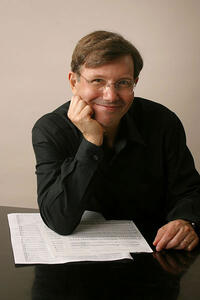
Music Director of the YSO from 1977-1983
Though I had more memorable experiences with the YSO than I can possibly put in one page, one of the most distinctive happened on my first YSO tour– the legendary QE2 crossing. Having garnered an invitation from the then-U.S. ambassador to Great Britain, former Yale President, Kingman Brewster, to perform Copland’s Lincoln Portrait with us in London, Chris Rude, YSO percussionist then manager, had the “brilliant” idea of trying to arrange passage on the QE2. On paper a brilliant idea as it would not only save money–by agreeing to perform on board as the first symphony orchestra to perform on the ship we would get free passage–but it would be a novel experience for the orchestra as well as great publicity.
However what we neglected to realize was that at the time of year we would be crossing-the first crossing of the season–the Atlantic Ocean would be incredibly rough. And by all accounts, our crossing was one of the roughest in the QE2’s history. People were utterly nauseated for most of the trip, and since for some quirk of physics, being in the swimming pool was the only place you could relieve the nausea, the pool was continually jammed.
When it finally came time to perform the Barber piano concerto and Tchaikovsky Pathétique, most of the wind players were green and barely holding their food down. In addition the piano and the entire orchestra was sliding back and forth on “stage” with every new wave and crest. (We also discovered that due to the engine vibrations, the piano would go out of tune every hour.) Adding to the bizarreness of the experience, we were performing at 10AM in the “Double Down lounge” with audience members sitting on spiral staircases and hanging from balconies. It was one of the most unpleasant and worst performances I have ever been part of, but somehow, like so many memories, it gets better with each retelling.
And finally, the other truly memorable experience from that crossing was the discovery that if it were someone’s birthday, the restaurant would provide an entire cake for the table. Suddenly 50% of the orchestra developed birthdays during the crossing! As in so many other areas of life, Yalies rarely pass up an opportunity.
The YSO on the QE2. One of many memorable experiences.
Leif Bjaland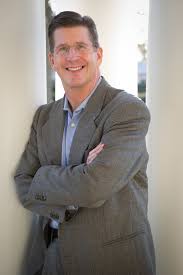
Music Director of the YSO from 1983-1986
My three years conducting the Yale Symphony were filled with ‘firsts’ both for me and for the orchestra. Having been recommended for the position by my teacher and mentor, Professor Gustav Meier (also former conductor of the Yale Philharmonia,) I moved to New Haven from my native Michigan in August of 1983. I was amazed by the beauty of the Yale campus, particularly the quaint colleges and majestic (and enormous) Woolsey Hall. During that first New England Autumn on campus, I think I learned more than my entire time at The University of Michigan! With the YSO, I was regularly conducting a really good orchestra for the first time. All I can say about that first semester is I began to understand the towering pile of things that I did not know. This was never clearer to me than when I attended Yale Philharmonia rehearsals conducted by the legendary Otto Werner Mueller. Somehow, that first year I managed to survive. I was doing everything for the first time: my first Brahms 2nd Symphony and Dvorak New World Symphony, my first Hindemith Mathis der Mahler and Stravinsky Rite of Spring. Yikes! After finishing each YSO concert, I heard a voice in my head: the voice was of my college roommate, Bob Spring, who would conclude each of our U of M Band concerts with the pronouncement “Well, we fooled ‘em again!”
At the end of my second year conducting the YSO, we set out on a concert tour of Hungary and Austria, the orchestra’s first trip to Europe. We had two different programs – an (almost) all American program for the big cities and a (mostly) European program for the smaller, more musically conservative venues. We had two soloists, principal oboist Sarah Hundley and principal ‘cellist Owen Young.
Our first stop was Budapest. Arriving at the concert hall, we were greeted by a large placard advertising our program, which included one of my all-time favorite typos: Samuel Barber’s Adagio for Springs. The concert was a huge success and during a tour of the city we were shown buildings that were still pockmarked by bullets from the 1956 uprising. We were received with such warmth - I think more in Hungary more than anywhere else on the tour.
Our concert in Vienna was about half way through the tour. We performed at the European holy of holies, the Musikvereinssaal (home to the Vienna Philharmonic and site of numerous premieres of works of Brahms, Strauss and Mahler). Looking back, the program may have been somewhat edgy for the then conservative Viennese, since it featured by works by Igor Stravinsky and Charles Ives. But there was some ear candy in the form of Bernstein’s Candide Overture and Gershwin’s American in Paris. Sousa provided the encore: Stars and Stripes Forever! with the Viennese in the audience enthusiastically clapping along.
My partner, Emil, was sitting out in audience, during our performance of American musical icon (and Yale graduate) Charles Ives’ masterpiece, Three Places in New England. Seated in front of him was a young boy (an Austrian version of Little Lord Fauntleroy) who was with his mother. When the second movement, Putnam’s Camp, ended in a burst of raucous, triumphant cacophony, the boy turned to his mother and shrugged, as if to say “what can you expect, they’re Americans.”
After the concert, we were able to spend some free time in Vienna. Those two days are still magical and unforgettable. From there we traveled across the Austria in our buses through foothills of the Alps to Salzburg. On the morning following our concert there, we were all awoken by the peal of what sounded like hundreds of bells, marking the beginning of the Feast of Corpus Christi.
During breaks on our bus trip through the Austrian countryside, the musicians enjoyed some well-earned free time and would go on short hikes in the mountain passes, break out into frisbee games and just enjoy the comradery that you can only experience as a musician on a concert tour far from home.
In March of 1986, the YSO had another first: the orchestra’s first performance at Carnegie. Taking the buses with all of the musicians from outside of Hendrie Hall to Carnegie Hall was the most amazing ‘field trip.’ It was also irrefutable proof that all halls a not created equal.
The whole idea for the concert began the previous fall during a trip into Manhattan for a concert. Arriving fairly early and with a few hours to kill, I decided to go to Carnegie’s booking office on the 7th Avenue side, fourth floor, to ask if it would be possible to reserve a date in early March for an orchestra concert. After looking through a large old-fashioned looking ledger, the clerk confirmed that March 3, 1986 was free and it would cost something around $3500 for the day (which included ushers and concert programs). Booked!
Works one the Carnegie program included Paul Hindemith’s Symphonic Metamorphosis on Themes of Carl Maria von Weber (Hindemith served on the Yale’s music faculty in the 1940-50s) and Von ewigen Leben, two songs for soprano and large orchestra with texts by Walt Whitman, composed by the early 20th century German composer, Franz Schreker. We were able to engage the up and coming soprano, Dawn Upshaw to sing the Schreker. She had to get special permission to do the concert from the Metropolitan Opera, where she was covering one of the three ladies in Mozart’s Magic Flute.
We had intensive rehearsals during the winter term, and the orchestra that climbed on to those buses in early March was ready to perform! Rehearsing on that historic stage was a thrill and the concert that evening was a big success.
Conducting the Yale Symphony Orchestra was one of my all-time favorite gigs. The musicians were all incredibly talented and bright, and a number went on to have big musical careers. YSO principal ‘cellist Owen Young is in the Boston Symphony and YSO concertmaster Sharon Yamada is a member of the New York Philharmonic’s first violin section.
I still work with Nina Crothers, who was in the YSO’s first violin section. To these and all other YSO alumni, I wish you great concerts, great memories and a bright future.
Alasdair Neale ’85 Mus. M., ’86 Mus. A.M.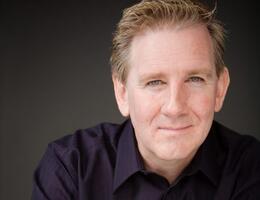
Music Director of the YSO from 1986-1989
One of my fondest memories of my time with the YSO revolves around the performance we did of Richard Strauss’s Metamorphosen, a study for 23 solo strings that lies at the center of the marvelous Indian summer Strauss enjoyed towards the end of his life. It’s an immensely complex work, demanding exceptional sensitivity and intense concentration from all its participants as they weave a tragic narrative over the course of a single, 25-minute span.
I was fortunate enough to have the cream of the crop of an astonishingly talented string section, all of whom were eager to take part. To kick off the process I organized a pizza party at my apartment on Wooster Street as a means of introducing everyone to the piece. We sat around my living room—each player having brought along their individual part—and I put on a superb recording with the Berlin Philharmonic and Herbert von Karajan and let the lush string textures wash over us. It was a great first step in what ended up being a memorable journey. We spent many hours exploring and refining the music together and by performance time we’d succeeded in making it a real piece of chamber music, with everyone fully aware not just of their own part but also everyone’s else’s too—a luxury afforded us by a long gestation process that just isn’t an option in the professional world. The performances in Woolsey Hall and, as part of our 1988 UK tour, at the Royal College of Music in London and at the Usher Hall in my home town of Edinburgh, were worthy of the effort we’d put into the rehearsals, and their memory still reverberates with me more than thirty years later.
David Stern ’86 B.A., ’88 Mus. M.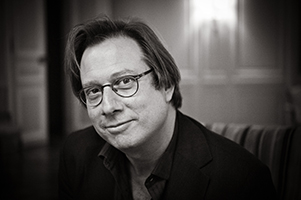
Music Director of the YSO from 1989-1990
Many, many years ago I was offered my first professional position as interim music director of the Yale Symphony and assistant professor at the school of music. Having earned my BA at Yale College (Trumbull ‘86), I was more than aware of the kind of commitment it meant to juggle the duties for an undergraduate and a performing musician. Since then I have gone from green to gray, from New Haven to Paris, from Woolsey to concert halls throughout Europe and Asia, but I will never forget my time with the YSO. The energy and inspiration that the students showed, despite the deadlines, papers and other extracurricular activities (such as actual classes) never failed to carry off the concerts with panache and flair. Not only did we delve into Bartok, Brahms and Dvorak, but come the end of October, the pressure was on to face the music, so to speak. The responsibility of maintaining the Halloween tradition was one that I met with seriousness and exactitude. I will never forget the orchestral arrangement of the Batman theme music (although, I have, willingly or unwillingly, forgotten a host of other details from that evening). The photo below, of myself in Mozartian garb, and my then girlfriend (and now wife of 30 years) Katharina (Pierson ’87), shows to what end professionality and self-mockery can go hand in hand.
Today I am grateful for my time at Yale, first with the Bach Society and then with the Symphony. It was a formative period and an artistic challenge and I am proud to say that I was associated to such a wonderful institution. Boola Boola and Bravo!
Shinik Hahm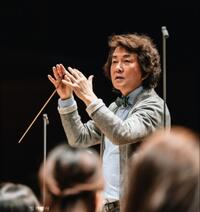
Music Director of the YSO from 1995-2004
Our concert in St. Patrick Cathedral in NYC with Yale Camerata performing Mozart Requiem recalls a moving event mixed with perilous moments. There were more than 5,000 audience gathered around the cathedral and the traffic on 7th avenue and Rockefeller plaza was a total mess. The fire marshal came backstage and told me that we could not perform with this overwhelming audience. While the management and the fire marshal debated the situation, I snuck onto the stage and began the Requiem. The concert was a huge success.
Many students were remarkable to me, but I always remember Catherine Amstrong, who played trumpet with me for three years. She was the first one to come to rehearsal and probably the only one knew her part by memory in the first rehearsal. I was not aware at first that she was blind. Her musicianship was unparalleled.
Toshiyuki Shimada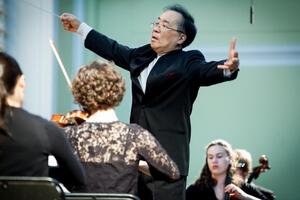
Music Director of the YSO from 2004-2019
My twelve years with the YSO were full of wonderful moments, both in the concert setting playing great works like Mahler and Brahms and in the fantastic, talented students I got to know through their student careers. It is a feeling of pride to know that so many YSOers went on to become professional performers and conductors.
Most dear to me was the 2010 tour to Turkey, which formed so many new relations that we had never expected. It was the first orchestra year that knew me as their conductor through all four years, and it felt like a special bond. The tour grew from a single concert opportunity to a three city tour of the country with Idil Biret, the famed Turkish pianist, as our guest soloist. We were treated so warmly by the Turkish community, enjoyed enthusiastic full audiences, and a beautiful country. Because of that tour, Idil came to New Haven and recorded the Hindemith concertos with the YSO, which became a release on the Naxos label; a true honor.
